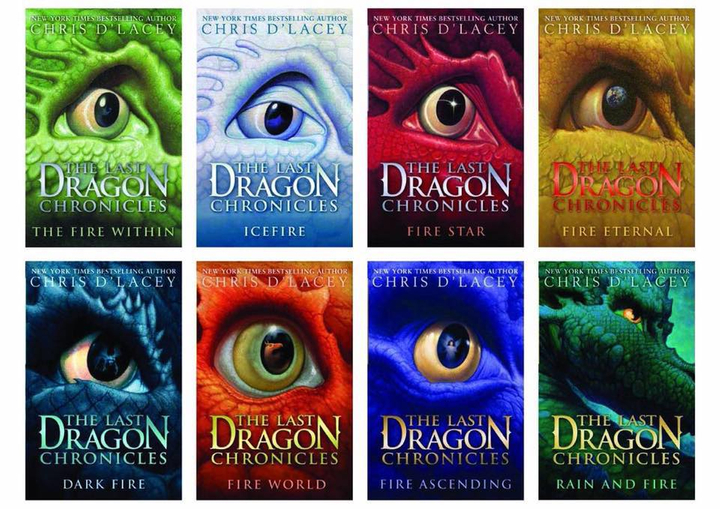The Fire Within
Chris d'Lacey
March 23, 2020
David - a quiet, curious lodger with a cosy affinity for writing moves into Wayward Crescent with the PennyKettles. What follows is a wonderful combination of squirrel adventures, a villainous next-door neighbour and a decidedly magical warmth to the clay dragons standing sentinel on every shelf.
“It’s perfect,” he said. “Just what I want. If you and your dragons will have me, Mrs Pennykettle, I’d like to move in right away.”
Invoking the best of a crisp autumn and unassuming friendships, d’Lacey spins a tale perfect for any animal-loving child. Some may be disappointed by the eighty percent squirrel story vs twenty percent dragonian mystery ratio, especially if you bought the book based on its cover. However, it must be highlighted that although the legend of the fire tear and the curious likeness of Liz and Lucy to their respective dragons is only revealed in the latter part of the novel; it is designed thus to form an intriguing foundation for the following six books in this fantasy series.

The Fire Within is structured around a second story, which David is writing for Lucy. As he thinks up each chapter, basing it around the comings and goings of the resident squirrels - one-eyed Conker, tough Birchwood, slinky Cherrylea and daring Snigger - the drama unfolds before his eyes. The evil crow Caractacus, Mr Bacon’s vermin traps, and of course Liz’s stroppy ginger cat Bonnington each spawn a new narrative kernel, with David’s story sometimes predicting the future, sometimes playing catch up.
“Caractacus spotted the movement right away. His wings went out like great black parachutes. Snigger made a nervous, darting run - then stopped, perilously, to peek over his shoulder. Caractacus dropped with devastating speed.”
The adventure spans across the town of Scrubbley, from Liz’s front garden to the leafy Library Gardens. With the help of the local animal shelter volunteer Sophie, the novel takes a mildly romantic turn as the plot line unfolds, and the secondary story follows conker’s encounter with the nutbeast until - as nature intended, he wuzzels off.
Meanwhile the clay dragons (which mysteriously do not need a kiln to be made or fixed), take on the role of telepathic muse; with their likeness being created on the basis of their owner’s strength of character. Our protagonists’ dragon Gadzooks, affectionately known as Zooky, has a pencil and pad and frequently scribbles useful words of inspiration to aid David’s writers block. Similarly, Guinervere, Gawain, Gwendolen and Gruffen all portray certain characteristics important to the Pennykettle household.
It is hardly surprising that this, alongside Roald Dahl’s Matilda convinced me that a) I should be a writer, and b) inordinate objects could absolutely be lined with magic. Indeed, reading this book at seven years old sparked a dragon collecting hobby that bordered on obsession. I was also gifted with for a potter’s wheel for my eighth birthday. It can’t be denied; I was inspired. D’Lacey’s writing is straightforward and intriguing, with each chapter leaving any young reader wanting more.
Stumbling upon this book in a £1 sale outside a corner shop in South-East London at twenty-five years old, I was delighted to find that the book was just as magical as I’d remembered. Children with an interest in animals will be on the edge of their seat throughout this fantasy, and parents can rest easy in the knowledge that this is a story to inspire kindness, creativity and a flighty imagination.